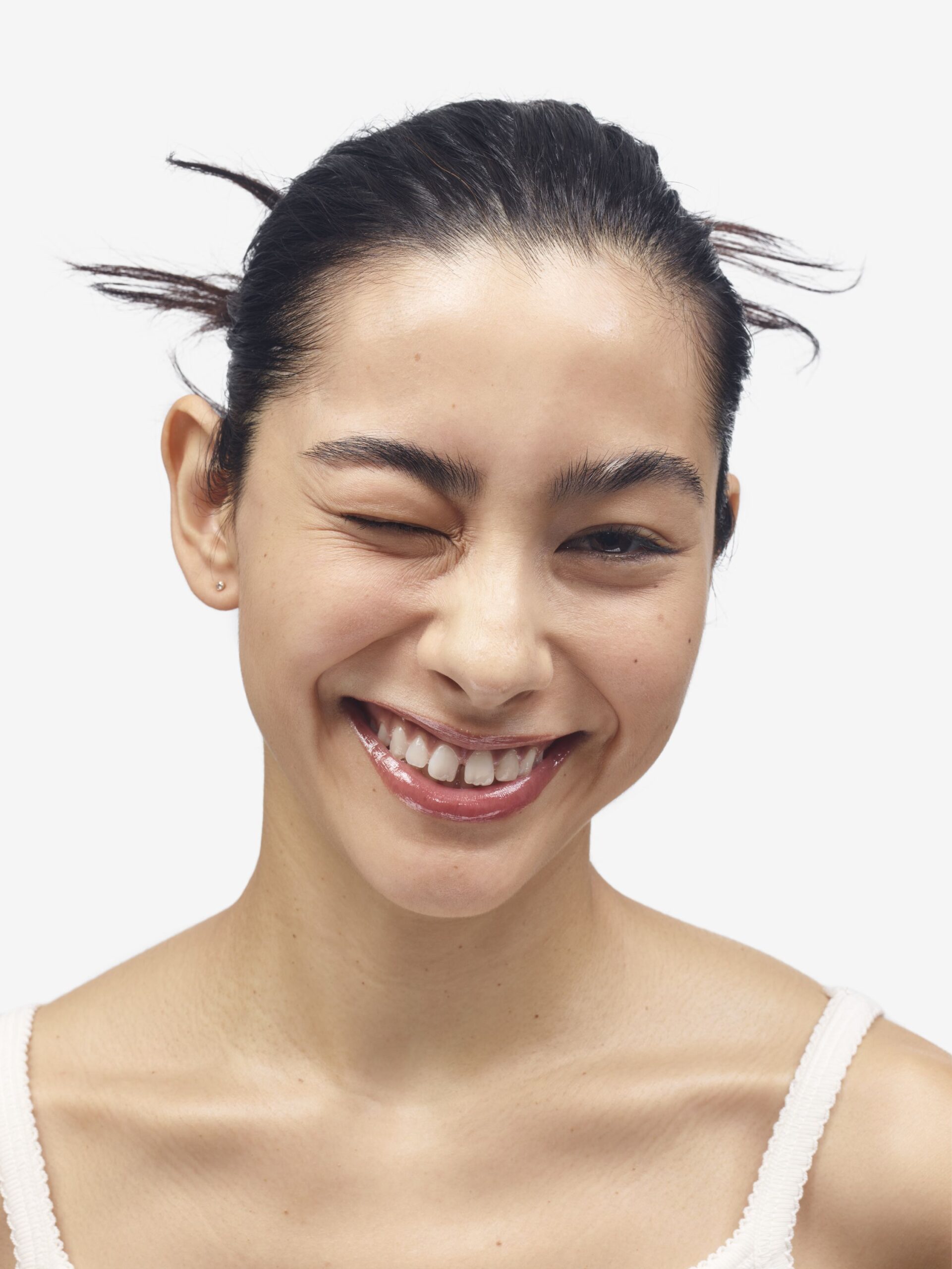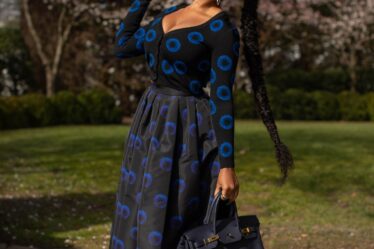
New year, new Glossier.
On Friday, the beauty industry darling will open a New York City flagship in SoHo, marking the brand’s return to Manhattan after closing its downtown store early in the pandemic. The 3,200-square foot space, fashioned with subway tile mosaics, is three blocks from its prior location, which was infamous for its round-the-block, rain-or-shine lines of customers eager to get a peek at the latest Balm Dotcalm lip salve.
The lines will almost certainly be back. But the New York store will arguably be overshadowed by Glossier’s next big move: starting on Feb. 23, the brand’s products will go on sale at every Sephora in the US and Canada.
After eight years of tightly controlling its narrative and distribution, Glossier is for the first time handing the reins to another retailer. The moves mark an inflection point in the brand’s comeback, following a series of changes Glossier set in motion in 2022 amid flagging sales and a sense that its go-it-alone model was out of step with the current beauty market.
In January 2022, Glossier laid off about one-third of its workforce. In May, founder Emily Weiss stepped down as CEO, transitioning into an executive chairwoman role, replaced by Kyle Leahy, a seasoned executive from Cole Haan and Nike. The Sephora partnership was announced in July. Last year, Glossier laid off much of its in-house tech team, signing on with Shopify to run its e-commerce site, which built and operated the company’s in-house technology and e-commerce platforms.
In many ways Glossier is going back to basics: launching more products at a quicker than ever cadence, opening a wave of flagship stores in metro hubs and, of course, entering Sephora. In other words, Glossier’s new plan is to finally start acting like other beauty brands. And it has high hopes; according to a source with knowledge of the business, Glossier is expected to hit $275 million in retail sales this year.
“DTC is a channel; it’s not our value proposition,” Kyle Leahy, Glossier’s chief executive officer, told The Business of Beauty. “Being digitally-native is a part of that story, but at the heart of it, we’re a community-based beauty brand.”
More Products, More Often
An outgrowth of Weiss’ website, “Into the Gloss,” Glossier was equal parts aspirational and no fuss. The products were pretty but uncomplicated and could be bought from the comfort of one’s home, a novel idea in 2014. “You Look Good” wasn’t Glossier’s brand slogan, it was a lifestyle.
Glossier took a curated approach to beauty, with essentials like its Boy Brow eyebrow pomade and Milky Jelly Cleanser. While customers loved the brand’s no-makeup makeup look, they craved newness. Glossier’s self-made limitations rarely went beyond its core lineup and shade extensions.
Developing new products is now the priority. Leahy shared that Glossier will be unveiling new items every four, six or eight weeks across its core categories of makeup, skin care, fragrance and body.
The brand’s deodorant that launched in January is seeing early success. A new scent dubbed Sandstone, sold out in 48 hours, and overall sales exceeded initial expectations by 400 percent, according to Kleo Mack, senior vice president of global marketing at Glossier.
She added that Glossier will continue to launch limited-edition products and sometimes bring these items back permanently. This is what happened with Wild Fig, a flavour of the brand’s Balm Dotcom lip balm from three years ago that just became part of the line’s updated lineup. In January, Balm Dotcom was reformulated to be vegan and petrolatum-free.
Despite the increased release cadence, the brand will skip the TikTok trend cycle and, instead, offer products that continue to speak to Glossier’s “polished, naturalist” aesthetic, said Leahy. There will be a new focus on building franchises around hero products, like the brand’s You perfume and Cloud Paint blush.
Finding the Customer
Glossier’s initial pitch to customers was that it was building a direct, one-to-one relationship with every shopper. But by 2020, that DTC model was showing signs of wear. Beyond growing customer acquisition costs and iOS updates, beauty consumers simply wanted to shop the brand as easily in stores as it could online.
After building a reputation soon after its 2014 founding as the brand that could do no wrong, Glossier became a victim of its success. It initially stood out because of its branding, messaging and experiential retail, but struggled to grow with a limited product range and a lack of retail partners.
Glossier aspired to scale by opening more of its own stores. But it needed money to target customers online with increasingly expensive ads on social media. A reliance on lavish experiences and retail concepts to attract customers offline also took up budget.
In 2021, Glossier raised $83 million in a deal that valued the company at $1.8 billion, putting its total funding at $266 million. The company’s 2019 sales were said to be around $160 million. Glossier is expected to hit close to $275 million in sales this year, according to an individual with knowledge of the company’s business.
Glossier had built a thriving community via user generated content on Instagram, discussions on Slack and through sought-after merchandise. But it struggled to bring that enthusiasm into the real world. Everybody wanted to be a part of Glossier’s world, but with only a handful of owned stores, most shoppers couldn’t experience the brand in real life.
“The idea of purchasing makeup and skin care products online was incredibly novel,” said Nabil Mallick, general partner at Thrive Capital, which participated in Glossier’s seed round and Series A. “The idea of not being able to try something on at the store was a crazy, crazy concept.”
Glossier’s own stores maintain the image that the brand was known for from its early days. At the new Soho flagship, there is a product testing area, wet bar, lounge and merch room with exclusive black Glossier hoodies. Locations in Boston and Chicago are due to open this spring, for a total of 11 stores.
“There is no place that we can bring the brand to life IRL better than in our stores,” said Leahy, noting that when Glossier’s Williamsburg store opened in November 2022, 600 people were in line by mid-day.
A DTC Brand no More
On Feb. 23, Glossier will go from being stocked in zero third-party stores to about 600.
It’s headed to Sephora in the splashiest way it can: in the retailer’s windows and front tables via its hero products like Cloud Paint, with even more products merchandised across six-foot gondolas with “You Look Good” selfie mirrors. Free samples of Milky Jelly Cleanser and After Baume are available to any shopper who asks.
The partnership will be a first of sorts for both parties: it’s Glossier’s first retail partner and it’s unusual for Sephora to invest this heavily in an established brand. Typically, Sephora launches new or smaller, indie beauty lines.
“In the case of Glossier, people really know who they are. The move to Sephora is not one of a stale brand that’s now going at discount. It’s a matter of accessing additional customers,” said Jonah Ellin, chief product officer at retail analytics firm 1010data.
Carolyn Bojanowski, executive vice president of US merchandising at Sephora, said long before the partnership was announced, Glossier was one of the top searched brands on the retailer’s website. Almost a decade’s worth of Glossier’s customer data will inform how the retailer sells the brand’s products.
“Knowing the data behind our clients who shopped on both channels … the happiest, the most loyal [shopper], she doesn’t care where she gets it,” Bojanowski said.
Going Back to the Community
Now that Glossier is yet another beauty brand on a Sephora shelf, it has to work harder at keeping — and connecting with new — consumers.
Online, Glossier will be relaunching its Generation Glossier Affiliate Program in the coming weeks with 700 creators. It is also re-engaging with Glossier Labs, the product development feedback loop with shoppers that began on Slack at the outset of the brand’s founding. To that end, its partnership with celebrity Olivia Rodrigo that kicked off in April 2022 in a bid to lure Gen-Z ended late last year.
“[The brand] still resonates and is still very relevant,” Manola Soler, senior director of consumer and retail at Alvarez & Marsal. “Glossier started with a community in a very literal sense and to this day there’s still a community or a tribe … that identify strongly with it.”
That deep connection with shoppers was a significant driver of Glossier’s early success, and Leahy knows it’s something that the brand has to amplify.
“It’s about how we … focus on what makes us uniquely Glossier, but then evolve. It’s not where we were in 2014,” she said.
With contributions from Rachel Strugatz



